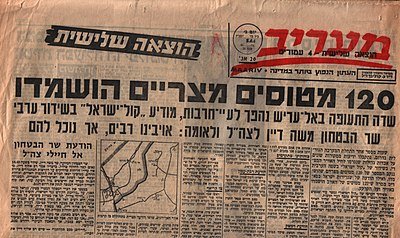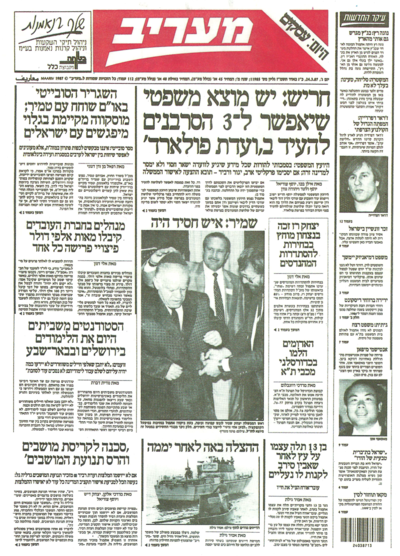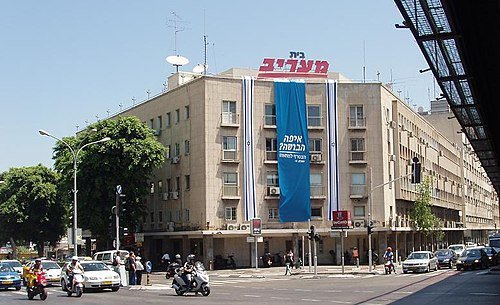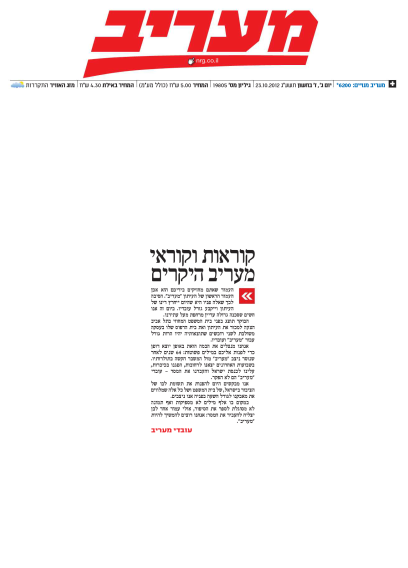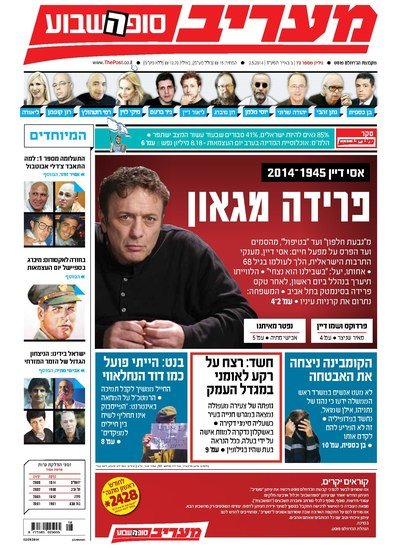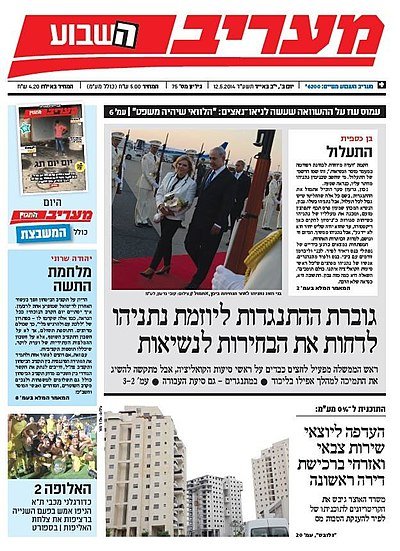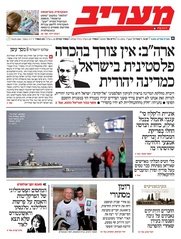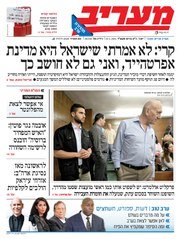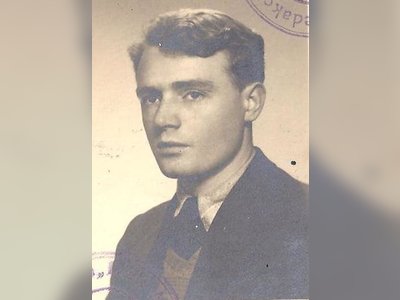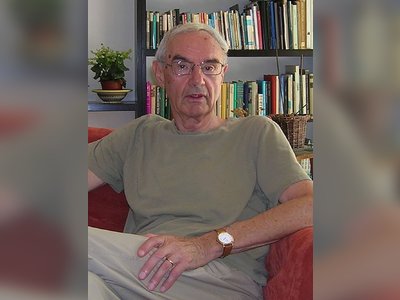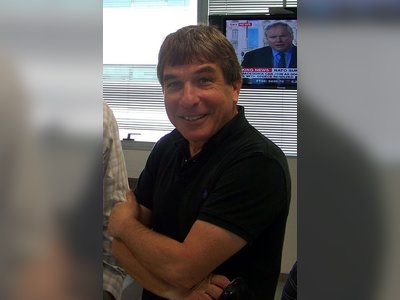"Maariv: A Chronicle of Israel's Iconic Newspaper"
Maariv was an iconic Israeli daily newspaper that graced the country's newsstands from February 15, 1948, until April 2014. Founded by a group of journalists led by Azriel Carlebach, Maariv emerged as a rival to "Yedioth Ahronoth." In the 1950s and 1960s, it enjoyed a dominant position in Israel's media landscape but eventually ceded its place to "Yedioth Ahronoth." For most of the 1990s, it was controlled by a group of shareholders, but later, investors took over. In 2012, it was owned by "Maariv Hashavuah Ltd.," traded on the Tel Aviv Stock Exchange.
In its later years, Maariv adopted a tabloid format with vibrant color images and bold headlines, characteristic of popular journalism worldwide. In a bid to attract a broad readership, it embraced a straightforward and concise writing style in spoken Hebrew, covering a wide range of topics, from politics and economics to entertainment and gossip.
In April 2014, the newspaper was sold to the "Jerusalem Post" group, under the ownership of Eli Azur, who merged it with the weekend magazine, renaming it "Maariv Hashavuah." Since May 2, 2014, the weekend edition merged with "Sof Hashavuah," creating "Maariv Sof Hashavuah," and apart from this, it became a daily newspaper once again, rebranded as "Maariv Hashavuah," with a short free edition called "Maariv Boker." The current editors are Doron Cohen and Golan Bar-Yosef.
The inception of Maariv was marked by a dispute between its editor, Azriel Carlebach, and its owner, Yehuda Mozes. Along with most of the staff, management, and the printing press, Carlebach left "Yedioth Ahronoth" and founded a new newspaper, which he initially named "Yedioth Maariv" on February 15, 1948. The conflict between Mozes and Carlebach reflected, among other things, a difference in their approach to the newspaper: one viewed it primarily as an economic entity (Mozes), while the other saw it as a public instrument.
As a result of this split, "Yedioth Ahronoth" lost a significant portion of its readership, while Maariv reached an average circulation of 25,000 copies, rising to 33,000 on special occasions.
The first issue of the newspaper prominently displayed the word "Yedioth" in large letters, with the word "Maariv" written beneath it in smaller letters. Moses demanded the closure of the newspaper, but the court ruled that its establishment was legal, although to avoid confusion, it should ensure that the word "Maariv" appeared larger than "Yedioth." A few months later, following a public announcement, the name "Maariv" was retained, and it became an evening newspaper.
In its early days, "Maariv" featured some of Israel's most prominent journalists, many of whom had been active since the Mandate era. These included Arie Dissentshik, Shalom Rosenfeld, Shmuel Schnitzer, Moshe Zak, Dr. David Lazer, David Galadi, Aharon Even-Chen, and others. They were known to readers from their earlier work at "Yedioth Ahronoth" and, before that, in morning newspapers, most of which were Revisionist Zionist publications.
This also applied to Aharon Klaus, who served as the news editor of the newspaper from 1949 to 1961. "Maariv" was targeted at the Ashkenazi, educated, urban population, which characterized Israel during the Mandate and its early years.
Unlike "Yedioth Ahronoth," which remained under the control of its journalists, "Maariv" succeeded in becoming Israel's most popular newspaper and proudly proclaimed itself as such for many years. Following Carlebach's sudden death in 1956 and the appointment of Aryeh Dissentshik as editor-in-chief, Maariv continued to thrive.
However, by the early 1960s, the circulation gap between the two newspapers had diminished. The turning point came during the Six-Day War, when a successful marketing strategy was employed by Yedioth Ahronoth: both newspapers were distributed free of charge to hundreds of thousands of new readers who had not previously encountered them. In the early 1970s, Maariv's circulation began to decline, while Yedioth Ahronoth's continued to rise.
In the 1970s and 1980s, Maariv's influence waned. Unlike "Haaretz," it failed to establish a strong foothold among the elite, and the broader public considered it staid and "heavy." Its competitor, "Yedioth Ahronoth," with its more populist and sensational approach, gained the upper hand in popularity. Maariv's slogan, "the most widely read newspaper in the country," continued to be featured beneath its name for two more years after it no longer accurately reflected reality.
The newspaper's editors during this period, Shalom Rosenfeld, followed by Shmuel Schnitzer and Ido Dissentshik, struggled to overcome these challenges.
By the late 1980s and early 1990s, Maariv's circulation had dropped to less than a hundred thousand copies per day, compared to Yedioth Ahronoth's middle-of-the-week circulation of sixty thousand and "Maariv" lost substantial ground.
In 1987, Dissentshik and designer Shimon Zandhaus initiated a design revolution in Maariv, replacing the traditional, well-known Frank-Ruehl typeface with a new font specifically designed for the newspaper called "Keslov." However, these changes were met with resistance from readers, leading to a sharp decline in circulation. Two and a half years later, the newspaper reverted to its previous format.
On October 11, 1989, Samir Assadli, a Syrian Air Force pilot, defected to Israel with his MiG-23ML fighter jet, landing at an Israeli airbase. Maariv rushed to publish a special edition with the story of the defection, although they had limited information other than the fact that the pilot had defected. To circumvent this issue, the newspaper published a fictionalized account on the front page, describing the pilot's arrival in Israel and the reception he received.
- מעריבhe.wikipedia.org


